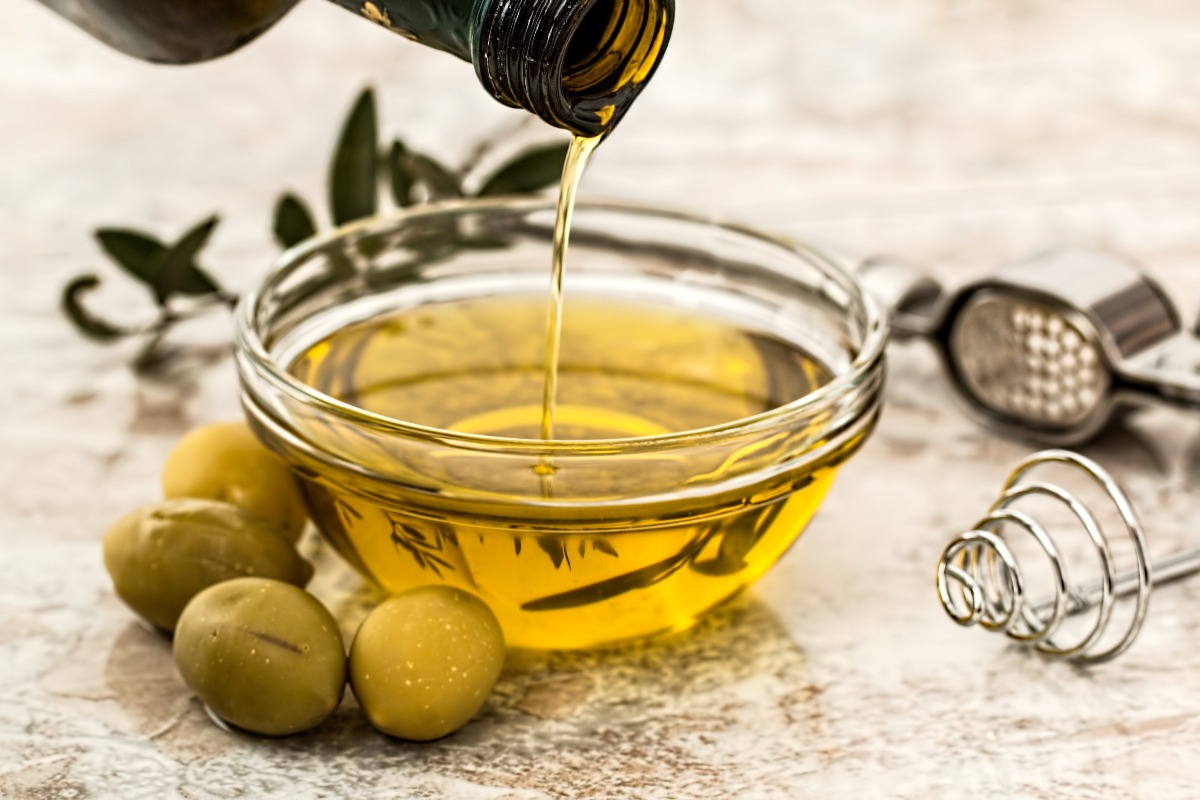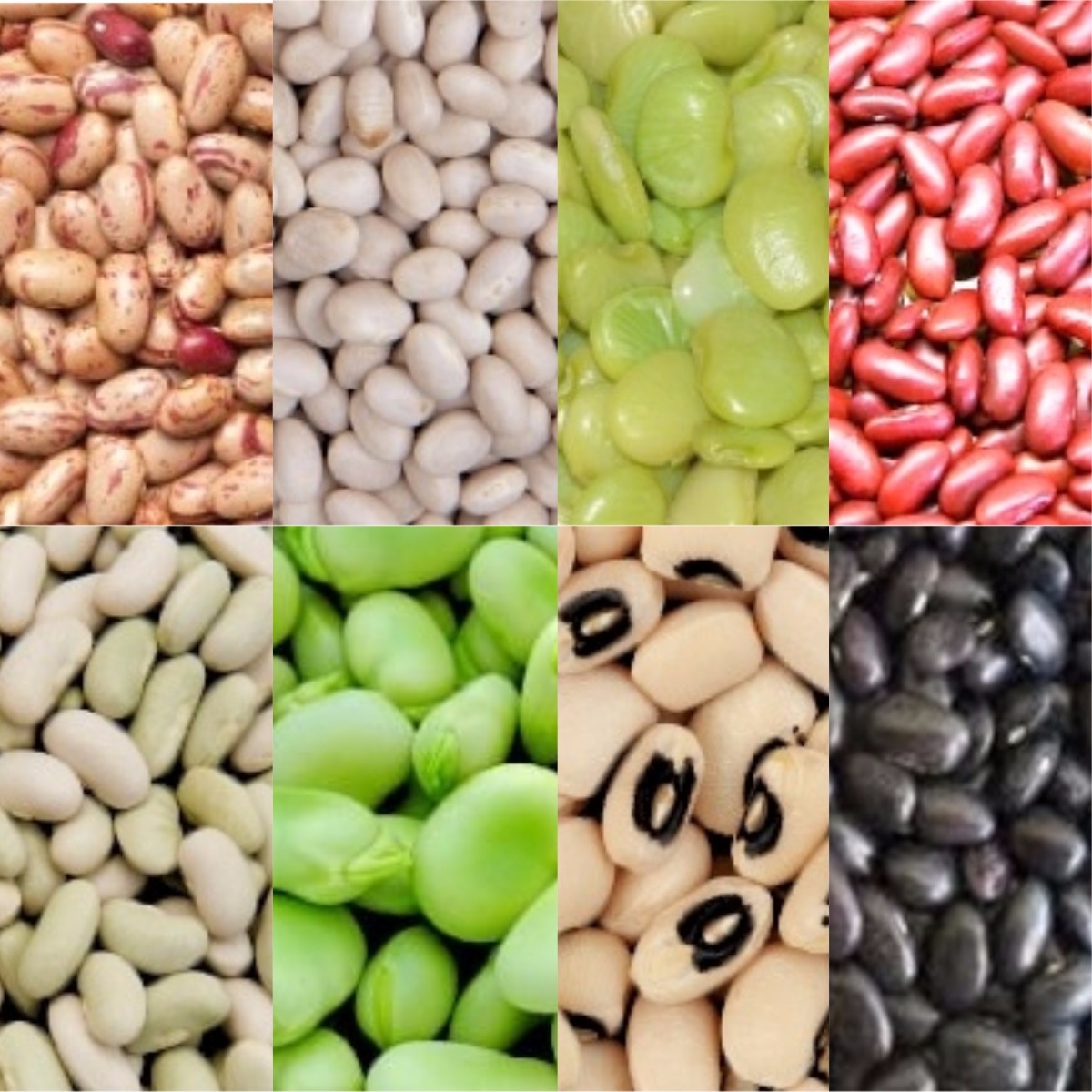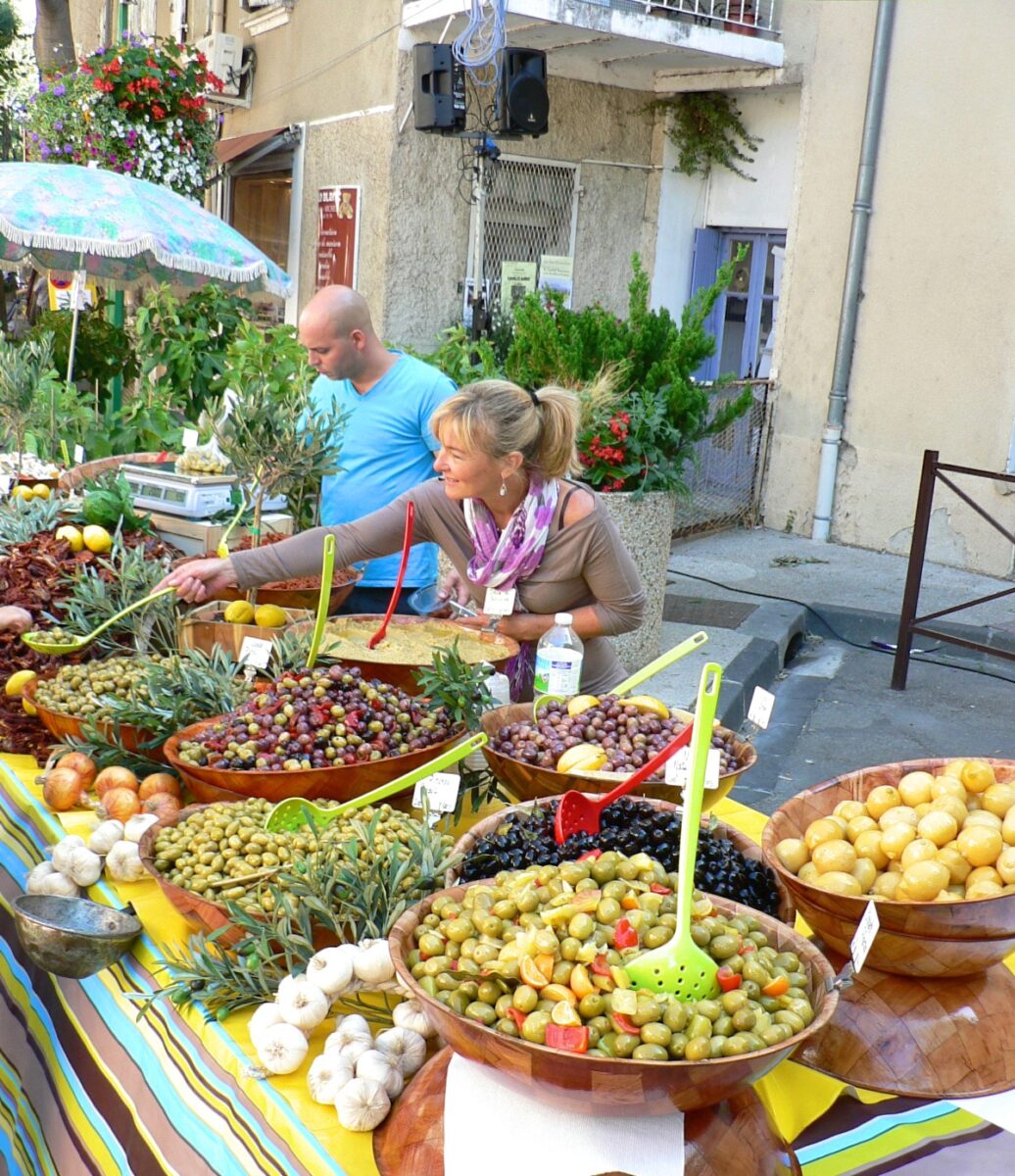Before you buy any olive oil, familiarize yourself with the different quality classifications. I also have some suggestions as to where to buy it.
You find artisan oil mills in California, Oregon, Arizona, Texas, Australia and nearly all Mediterranean countries. Many have small shops and offer olive oil tastings. You can buy directly or over the internet and the price/quality is normally much better than in retail stores.
Never buy olive oil in decorative glass bottles in tourist shops! You have a close to 100% chance to be disappointed as the quality of the olive oil does not live up to the fancy bottle.
Similar to wine olive oil tasting has its certain rituals, here is how it goes:
- Pour 1 tablespoon of olive oil in a small cup, shake it a little bit, warm the cup in your hands to increase the temperature
- Lift the glass to your nose and smell the aroma. Give it a couple of tries breathing in between away from the oil. Extra virgin olive oil has an aroma which differs from variety to variety.
- Take a small sip and roll the olive oil around in your mouth for 10-15 seconds. The oil must reach all parts of your mouth so that you can experience the taste from the front and the back of your mouth. Similar to wine, extra virgin olive oil has a beginning taste, a mid-palate taste, and a finish.
- Spit it out (if inside into a spittoon please). There should be no aftertaste; if there is the olive oil is not of good quality.
- Between tasting each kind of olive oil, drink a bit of water or eat a small piece of bread to cleanse your palate.
Similar to wine tasting, olive oil tasters have their own lingo.
Positive Characteristics: It does not mean that you have to like a particular olive oil with one or more of these traits – remember, it’s a bit like wine. These terms rather describe what the International Olive Council (IOC) deems acceptable traits to qualify for extra virgin olive oil, always provide that the technical criteria have been met.
Terms like fresh, fruity, ripe fruity, green fruity, hay-like, lemony, nutty, banana, artichoke, apple, almond, tomato and woody are aromas and tastes that are all positive and self-explanatory.
- astringent: the dry, puckering mouth feel normally associated with tannins
- bitter: indicative of fresh olive fruit
- green: young, fresh olives, often accompanied by a spicy-bitter sensation at the back of the throat
- green leaf: a small quantity of fresh olive leaves were pressed
- harmonious: all characteristics blend well
- peppery: peppery bite in the back of the throat
- pungent or stringent: stronger than peppery, can force a cough
- rotund: mature olives, full bodied oil with little aroma
- suave: very mature olives, gold color, sweet aftertaste
- sweet: smooth and quite mellow taste, mature olives
It may sound strange that some of these traits are considered positive. However, extra virgin olive oil is primarily used to give dishes a particular taste. An extra virgin olive oil with a peppery or green taste might shock you while tasting it on its own. Once incorporated into a dish releasing its aromas and flavors it’s a different story. I have 2-3 different varieties at home which I use depending on the type of dish.
Negative Characteristics: This is the horror cabinet of olive oil aroma and taste, but quite often found in olive oils sold in supermarkets and on the internet.
- bitter: if the taste is overpowering a positive trait becomes negative
- briny: made from brined olives, definite a no-no
- burnt/heated: taste largely associated with refined olive oil processed incorrectly
- coarse: no nuance, a one-sided taste
- cucumber: flavor characteristic of old oil
- dirty/vegetable water: olives have absorbed washing water too long before pressing
- regis: lubricating oil taste often found in refined oil. I suspect that’s why Bertolli and others came up with the Light and Extra-Light labels ‘for those seeking the benefits of olive oil with a barely detectable hint-of-olive taste’
- earthy: unwashed olives or those lying on the earth have been used
- esparto grass: hemp like flavor as a result of a defective pressing method using esparto mats incorrectly
- discolor: defective filtering process
- flat/impersonal: no aroma, no taste – often found in fake extra virgin olive oil as refined oil is used
- fusty: off flavor, olives started to ferment before pressing
- greasy: an diesel like flavor often found in low-grade refined olive oil
- grubby/olearic fly: olives infested with the olive fly were used
- hay-wood: dried olive taste
- metallic: storage for too long in metal containers
- moldy/musty/old: unhealthy or fermented olives were used
- phenic acid: a flavor of poorly stored old oil
- rancid: oils that started to oxidize due to exposure to light and/or air
- rough: thick, greasy mouth feel
- sour/winery/winey: unpleasant acidic taste
- warm: similar to fusty, olives started to ferment before pressing



